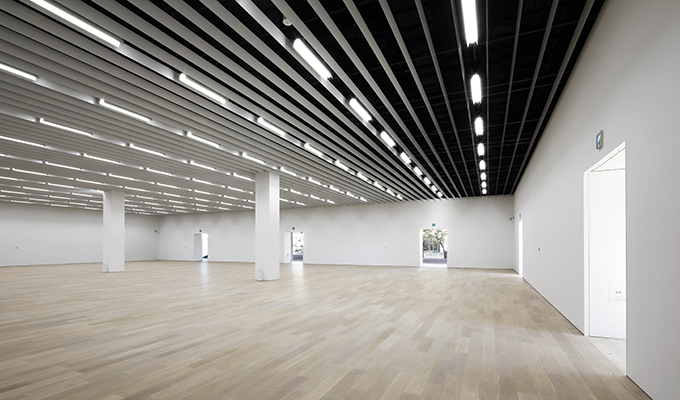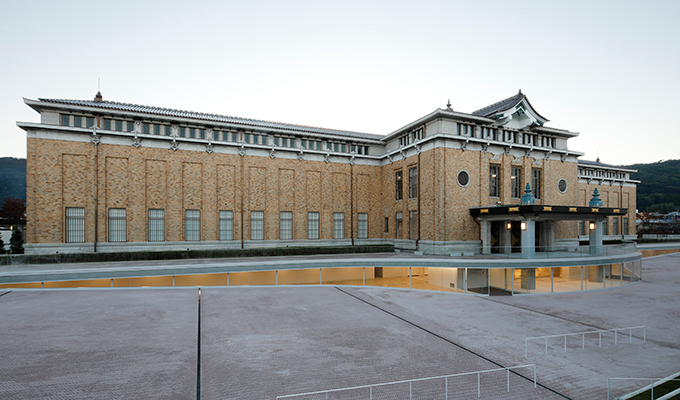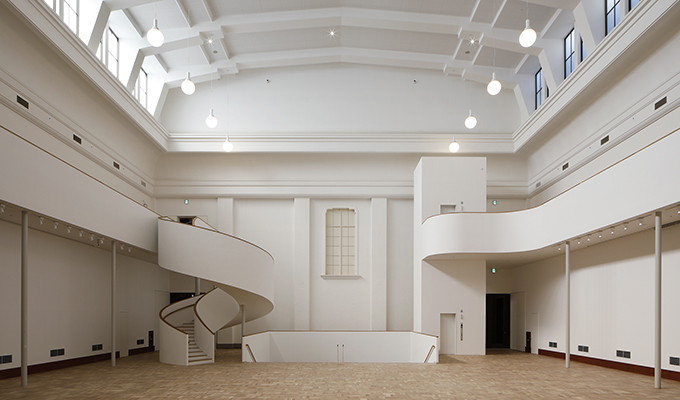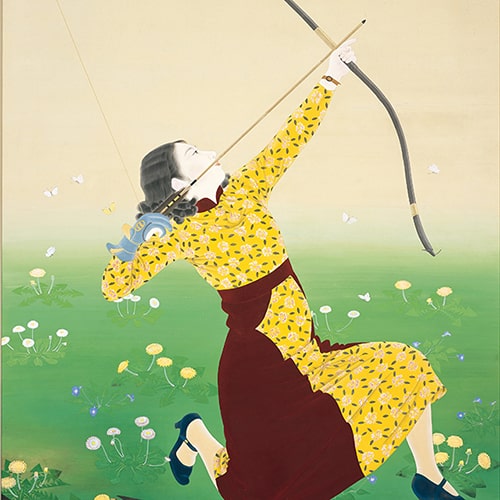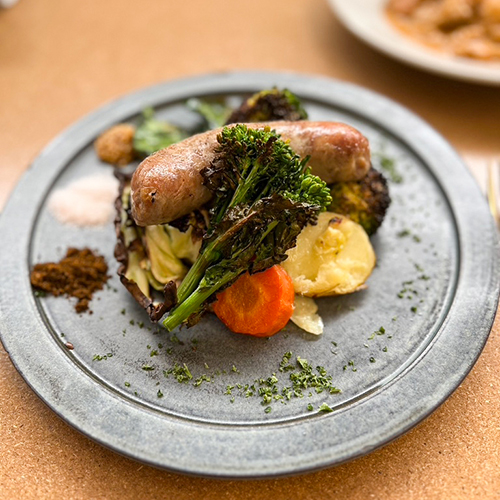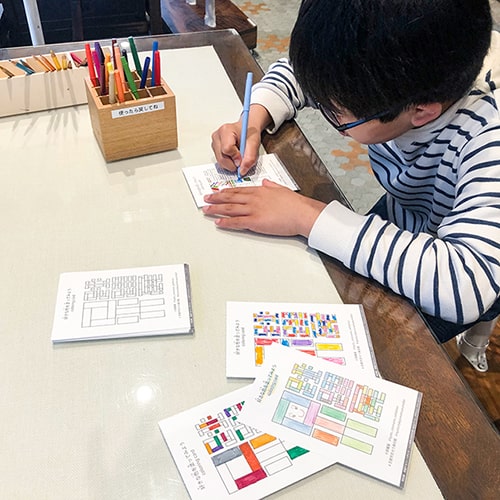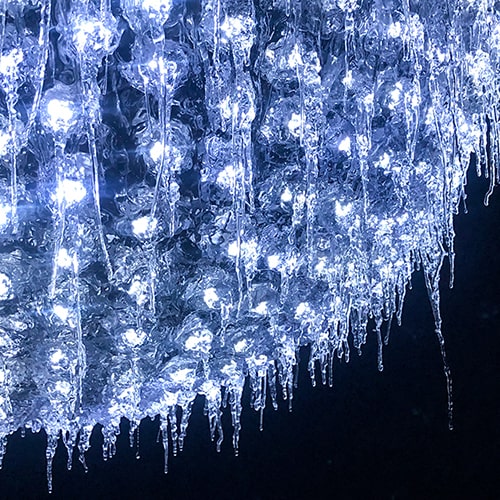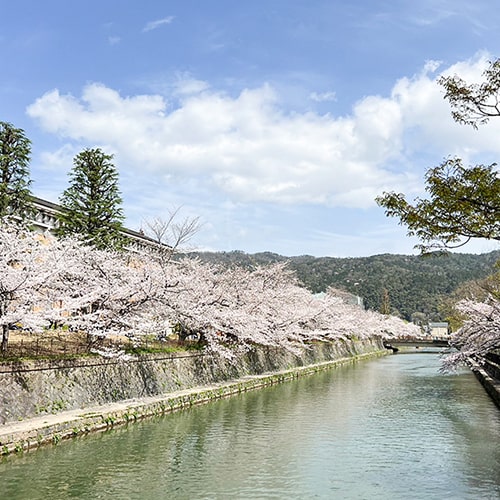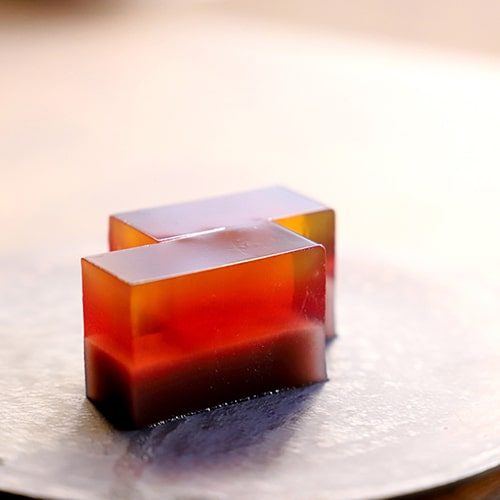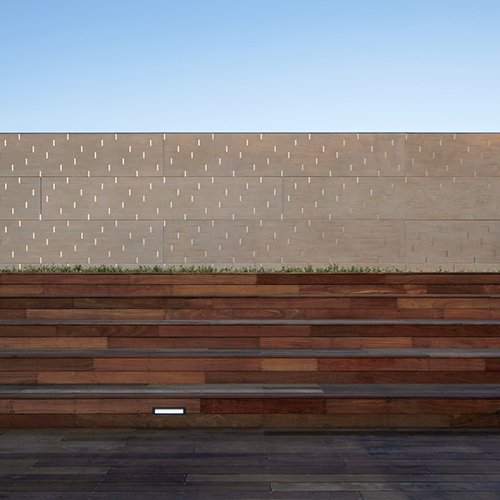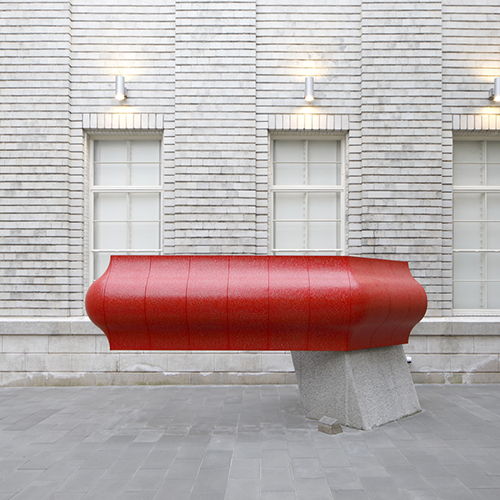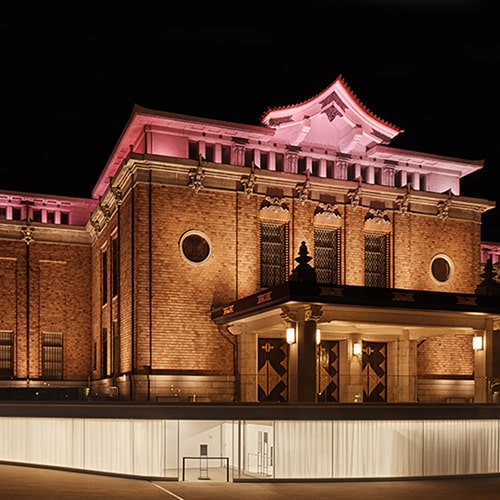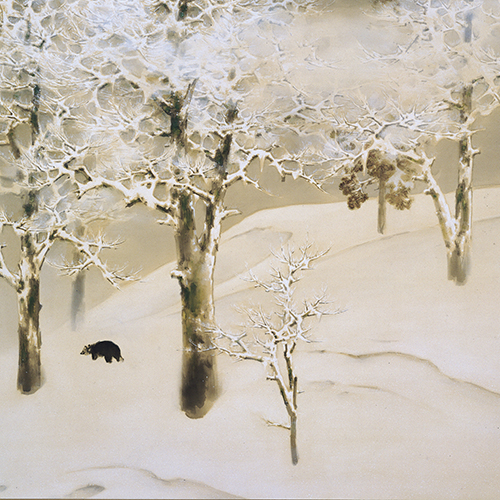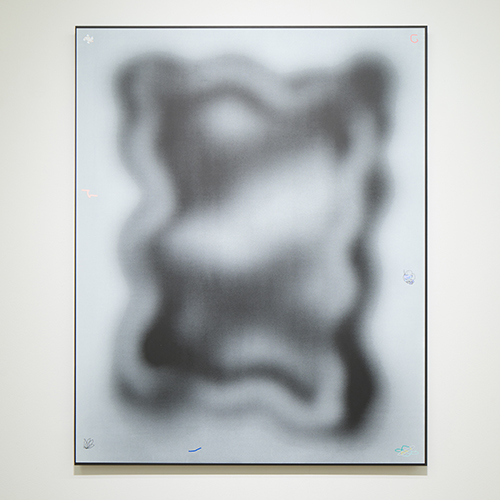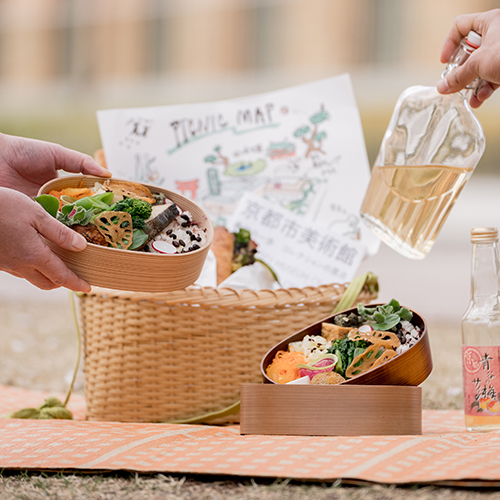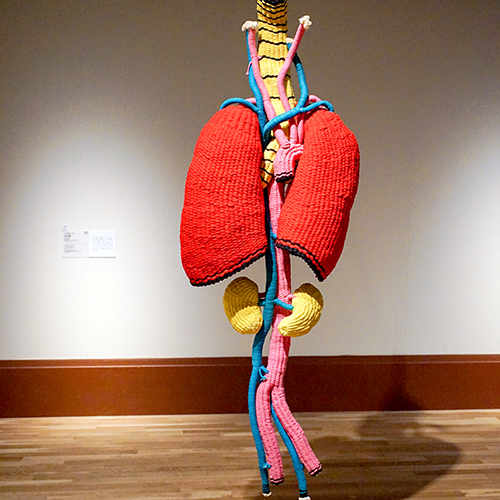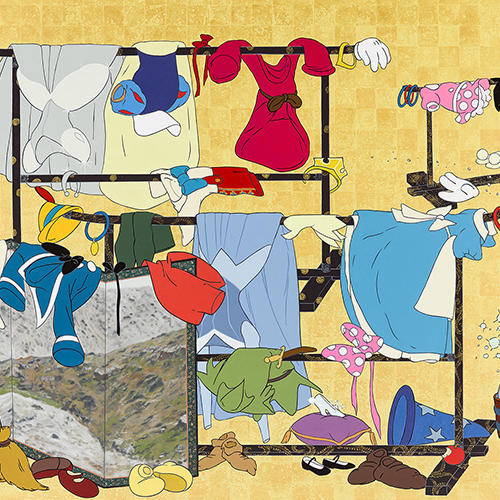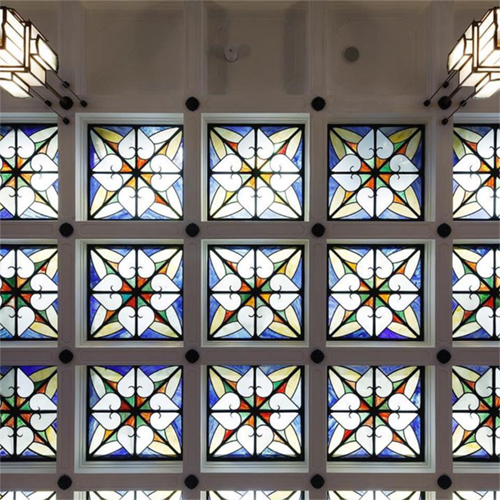310 days remaining
[2025 Schedule] Collection Room
2025/4/11-2026/3/15
Venue [ Main Building(North Wing)1F | Main Building(North Wing)2F | Main Building(South Wing)1F ]
-
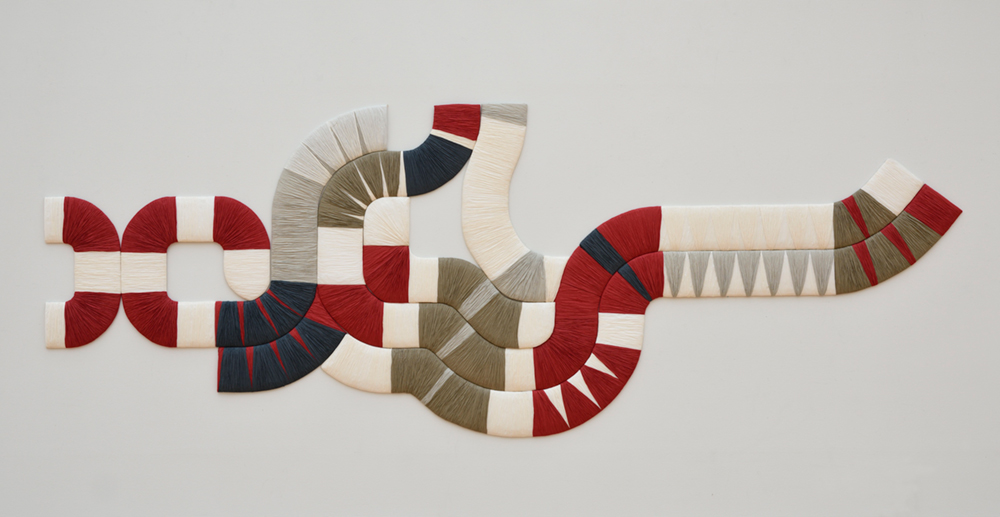
Shibuya Kazuko, Pathway to the Sun, 1991
Collection of the museumThe Museum Collection currently consists of approximately 4,400 works of Kyoto modern art comprising Japanese paintings, Western-style paintings, sculpture, prints, crafts, and calligraphy. In particular, the Collection includes masterpieces representative of Japanese painting made by Kyoto artists between the Meiji and Showa periods, making it one of the leading collections of such works in Japan.
Newly built at the time of the Museum’s renewal to allow visitors to enjoy the charm of this exceptional collection throughout the year, the Collection Room will introduce masterpieces by popular artists representative of Kyoto such as Takeuchi Seiho and Uemura Shoen, and feature exhibits on various themes to provide visitors with a full experience of the fascination of Kyoto art.
Spring: April 11 (Fri.) ― June 15 (Sun.), 2025
Special Display: The Journey of Textile Art: Kyoto Artists in Focus
Summer: June 20 (Fri.) ― August 31 (Sun.), 2025
Special Display: The Dawn of Western-style Painting: Following the Footsteps of Kuroda Jutaro
Fall: October 24 (Fri.) ― December 14 (Sun.), 2025
Special Display: A Gaze Towards Children
Winter: December 19 (Fri.), 2025 ― March 15 (Sun.), 2026
Special Display: The World of Ohina-sama and Japanese Dolls: Journeying Through the Seasons with Paintings
Shibuya Kazuko, Pathway to the Sun, 1991
Collection of the museumInformation
- Period
- Spring: April 11 (Fri.) ― June 15 (Sun.), 2025
Summer: June 20 (Fri.) ― August 31 (Sun.), 2025
Fall: October 24 (Fri.) ― December 14 (Sun.), 2025
Winter: December 19 (Fri.), 2025 ― March 15 (Sun.), 2026 - Time
- 10:00−18:00 (last admission 17:30)
- Venue
- Main Building(North Wing)1F | Main Building(North Wing)2F | Main Building(South Wing)1F
- Closed on
- Mondays (except public holidays)
- Admission
- Kyoto City residents: ¥520*
Non-residents: ¥730
Groups (of 20 or more): ¥620
Elementary, junior high and high school students: Free**
Non- resident elementary,
junior high and high school students: ¥300
Groups: ¥200
Children under elementary school: Free
*Admission is free for residents over 70 (with valid ID or senior boarding pass) and for those with disabilities (with valid disability certificates). Admission is ¥100 for students attending Kyoto universities registered as Kyoto City Campus Culture Partners.
** living or studying in Kyoto
Please bring a valid ID.
-
Spring: April 11 (Fri.) ― June 15 (Sun.), 2025
>Special Display: The Journey of Textile Art: Kyoto Artists in Focus
Kubota Shigeo, Echo of the Ocean III, 2019
Collection of the museumKyoto has long been home to numerous textile artists, whose exceptional designs are founded on dyeing and weaving techniques that have been cultivated over many years. Since the modern era, a more innovative approach to dyeing and weaving was sought, as seen in the handwoven brocades of Yamaga Seika and Nakamura Hosei, who express rich textures by weaving together various materials, as well as the fiber art movement that gained popularity from the late 1960s onwards. This exhibition introduces the textile art of Kyoto from the 1930s to the present, incorporating recent acquisitions while focusing on techniques, choices of materials, and distinctive forms of expression.
For the first time since the Museum’s renewal, the Collection Room Spring will be held on the second floor of the North Wing. Please enjoy the impressive works in this spacious gallery.

Kubota Shigeo, Echo of the Ocean III, 2019
Collection of the museumSummer: June 20 (Fri.) ― August 31 (Sun.), 2025
Special Display: The Dawn of Western-style Painting: Following the Footsteps of Kuroda Jutaro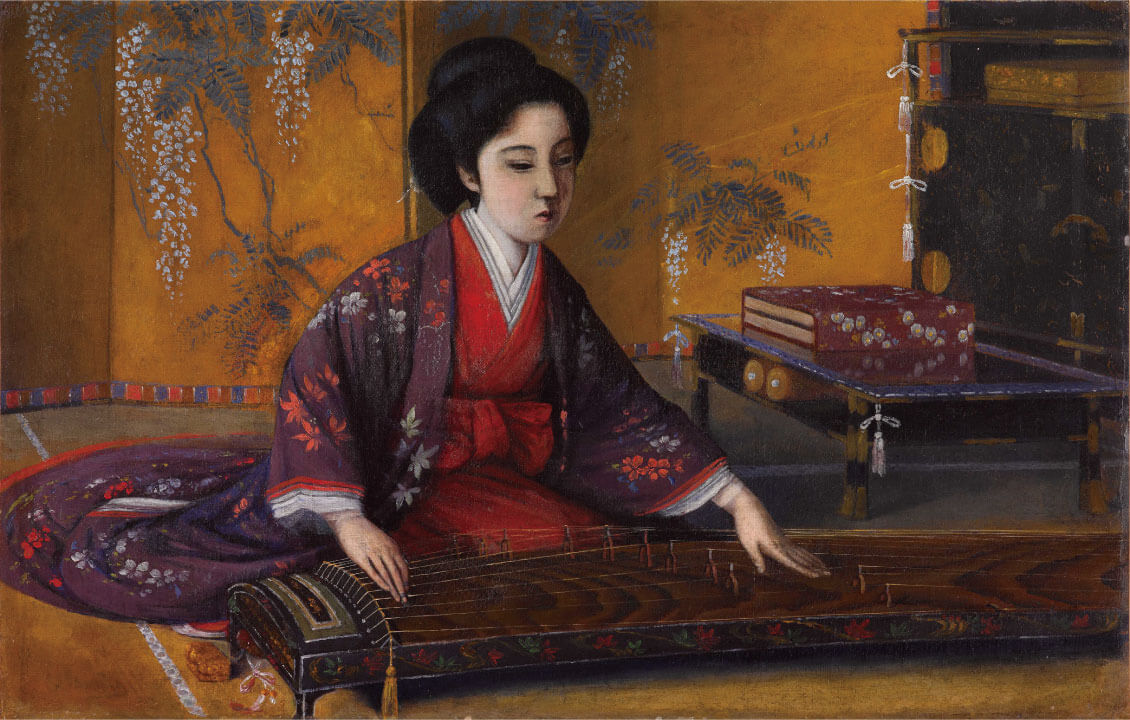
Tamura Soryu, A Maid of Honor Plays the Koto, a Japanese Zither, c. 1897
Collection of the museumKuroda Jutaro, a prominent figure in the Kyoto Western-style painting scene, was not only a painter but also a prolific writer. His literary works conveyed the trends of European art, particularly those in France, and played a significant role in the acceptance of Western art in Japan. His 1947 publication Kyoto Yoga no Reimeiki (“The Dawn of Kyoto Western-style Painting”) provides a systematic account of the development of Western-style painting in Japan, focusing on Kyoto. With the publication of a revised and expanded edition in 2006, the book remains an essential work for understanding the Kyoto Western-style painting scene today.
This Special Display traces the formation of Kyoto’s Western-style painting scene as told by Kuroda, introduced through the Museum Collection. From pioneers such as Tamura Soryu, the establishment of the Kyoto Prefectural School of Painting, the formation of the Kansai Bijutsukai, and the arrival of Asai Chu in Kyoto, please enjoy exploring the foundations that shaped the development of Western-style painting in Kyoto.
Tamura Soryu, A Maid of Honor Plays the Koto, a Japanese Zither, c. 1897
Collection of the museumFall: October 24 (Fri.) ― December 14 (Sun.), 2025
Special Display: A Gaze Towards Children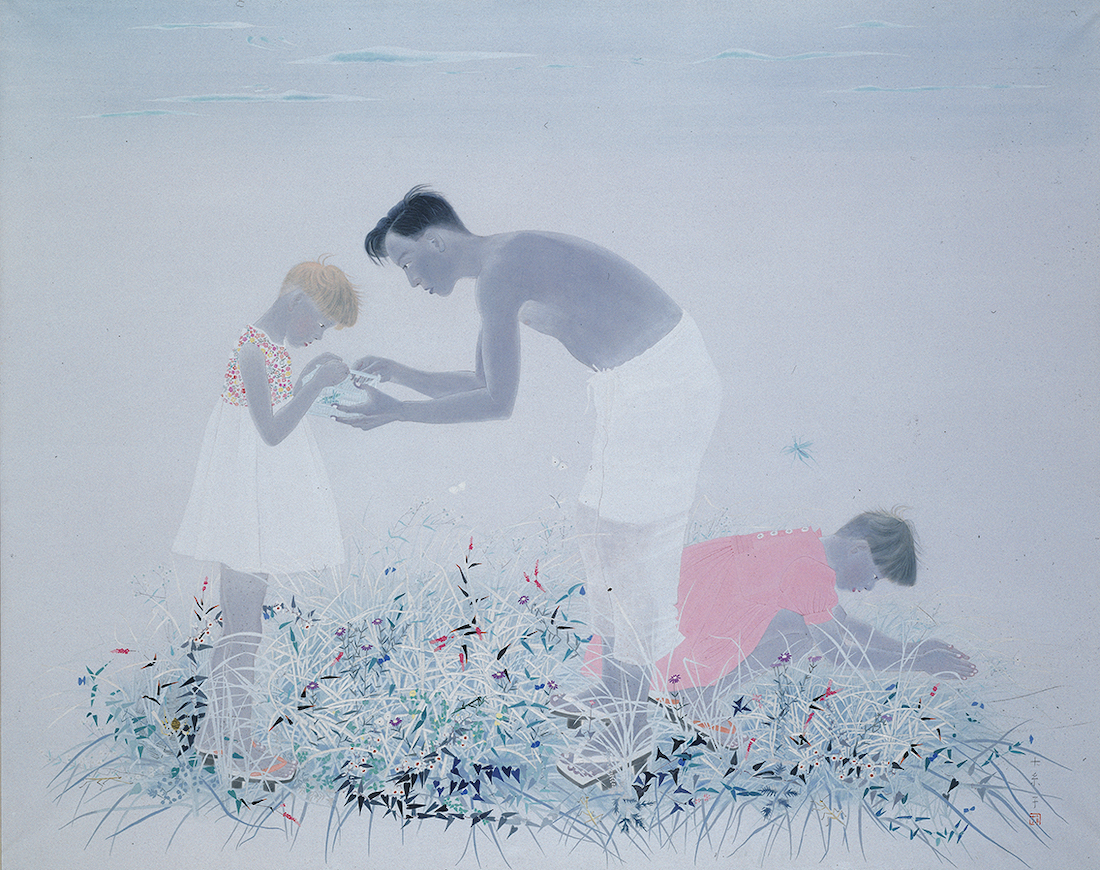
Mitani Toshiko, Morning, 1937
Collection of the museumWhat exactly is the nature of a child? Adorable and pure. Free yet bearing a sense of fragility. These perceptions of children are, in many ways, discoveries that were made anew in the modern era. The Meiji period saw the establishment of schools, leading to the development of children’s education. By the Taisho period, a distinct children’s culture had been established, including children’s magazines and nursery rhymes, and many cultural figures, such as authors and composers, turned their attention to children.
In this climate, many modern painters also began to observe and depict children in their works—as symbols of purity, expressions of youthful vitality, or as beloved family members. Numerous works featuring children are also housed in the Museum Collection. This Special Display, centered on paintings themed around children, will reflect on the “gaze towards children” in the modern era.
Mitani Toshiko, Morning, 1937
Collection of the museumWinter: December 19 (Fri.), 2025 ― March 15 (Sun.), 2026
Special Display: The World of Ohina-sama and Japanese Dolls: Journeying Through the Seasons with Paintings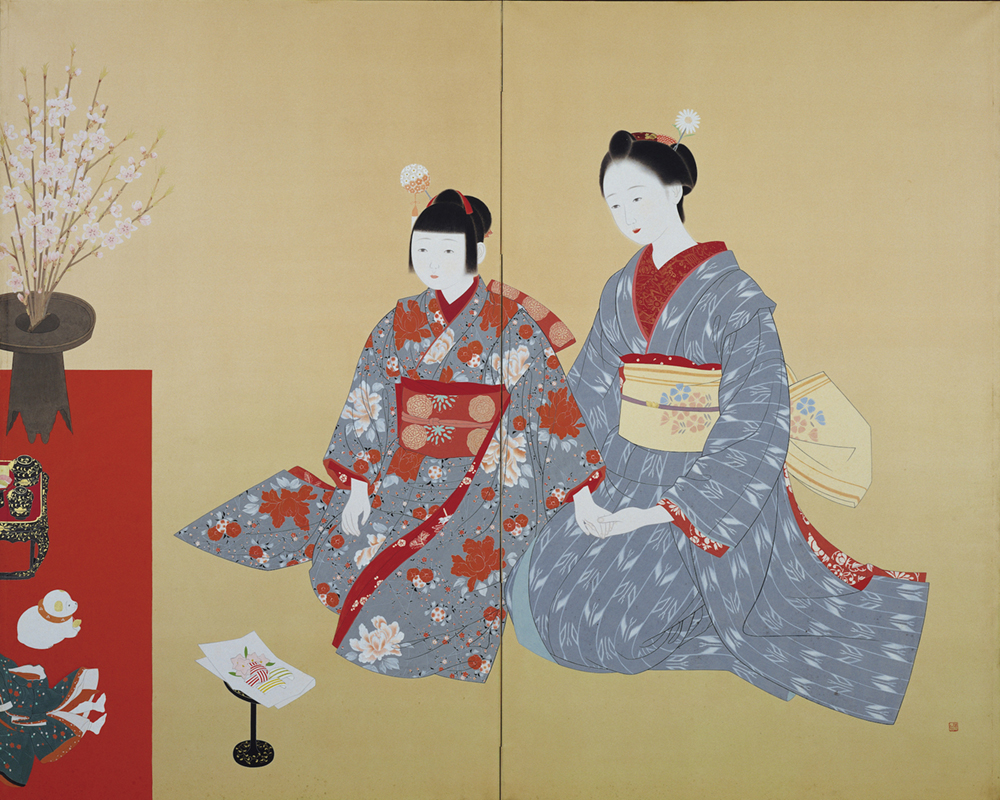
Kitazawa Eigetsu, Daughters, 1935
Collection of the museumThis exhibition showcases the elegant dolls of Maruhei Oki, a doll maker founded in Kyoto during the Meiwa Era in the Edo period, displayed alongside paintings depicting Gosekku (“the five seasonal festivals”) and other seasonal events. Maruhei has a long doll-making tradition rich in exquisite craftsmanship, from costumes through to furnishings, based on the customs of the Imperial Court. Focusing on Hina dolls, which have long been loved by the Imperial household and other important families, and comprising Gosho dolls, Isho dolls, Ichimatsu dolls, and other dolls unique to Maruhei displayed alongside the works of modern painters from the Collection, this exhibition will reflect on the enduring beauty of tradition in Kyoto.

Kitazawa Eigetsu, Daughters, 1935
Collection of the museum -

Shibuya Kazuko, Pathway to the Sun, 1991 Collection of the museum 
Kubota Shigeo, Echo of the Ocean III, 2019 Collection of the museum 
⽥村宗⽴《官⼥弾琴図》 1897年頃 京都市美術館蔵 
浅井忠《グレーの柳》 1901年 京都市美術館蔵 
三⾕⼗⽷⼦《朝》 1937年 京都市美術館蔵 
Kitazawa Eigetsu, Daughters, 1935 Collection of the museum 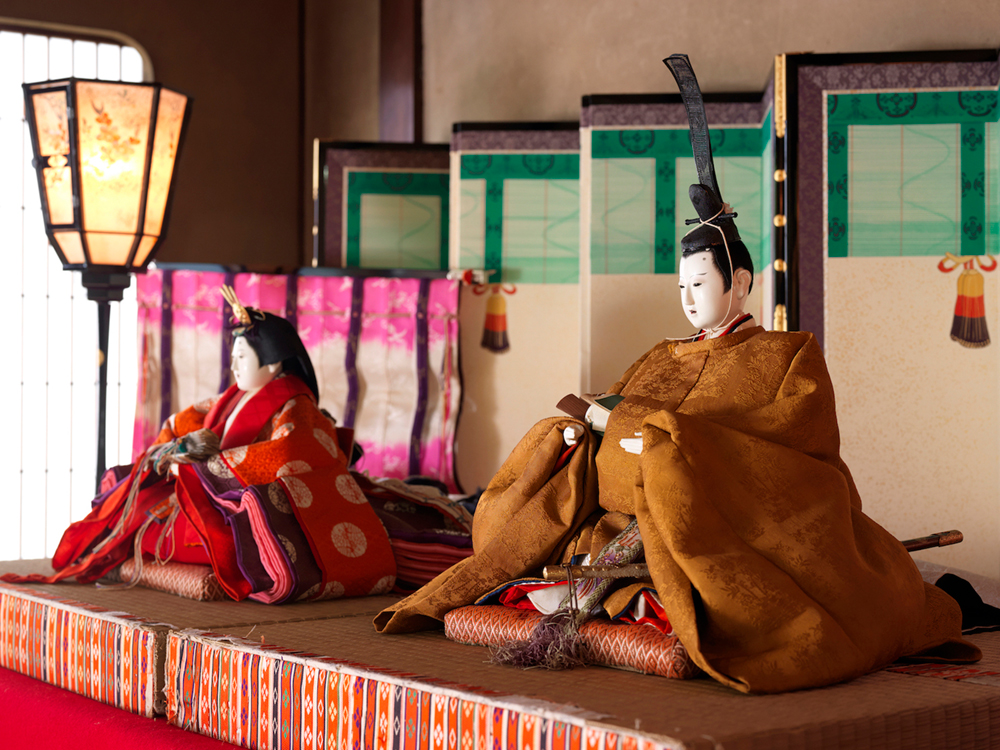
Oki Heizo V, Japanese Hina Dolls: Celebrating the First Girls’ Day, 1934 Collection of Maruhei Bunko -
Museum Cafe
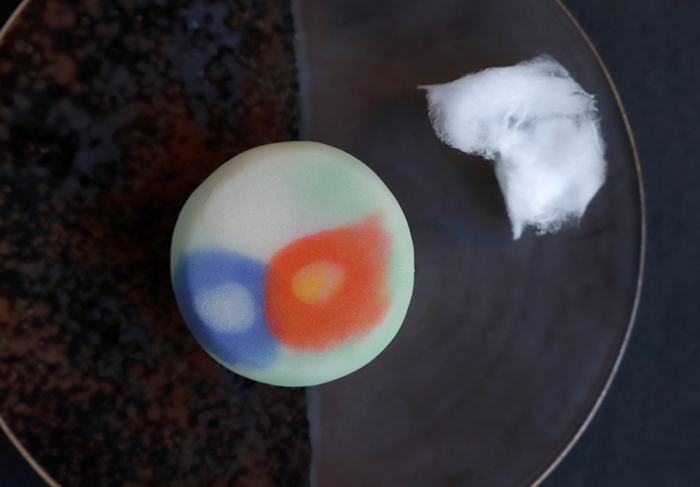
The menu of seasonal sweets in Cafe ENFUSE will change four times a year, along with the seasons. Also the museum shop will continue offering new confectionary selections twice a month, every month.


